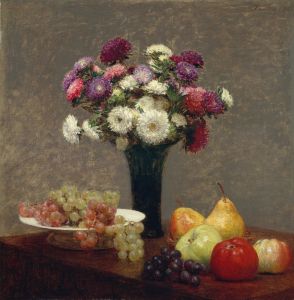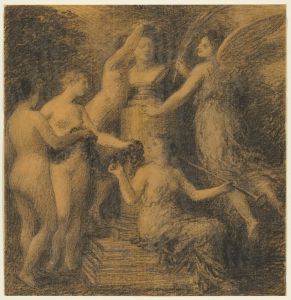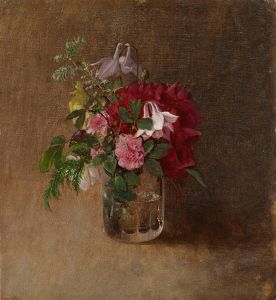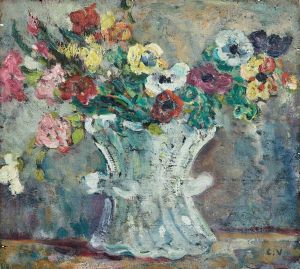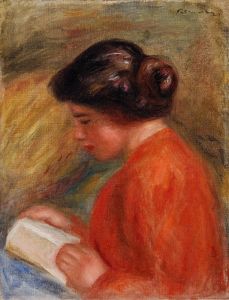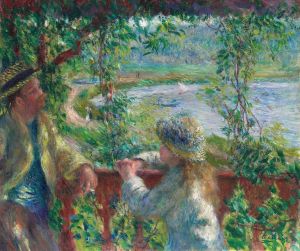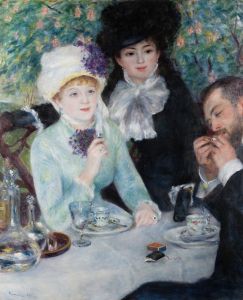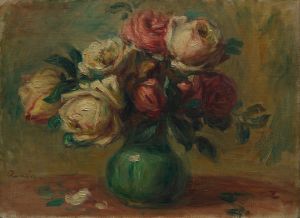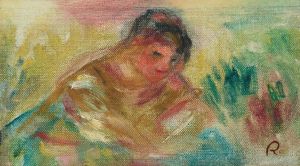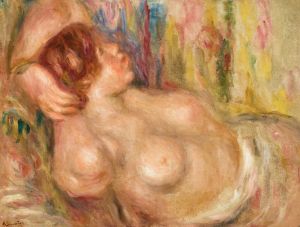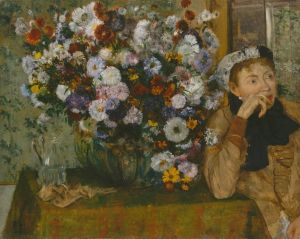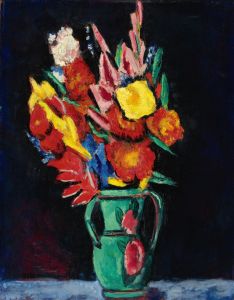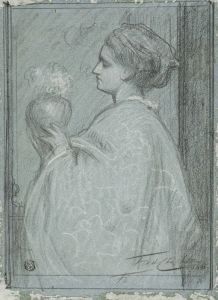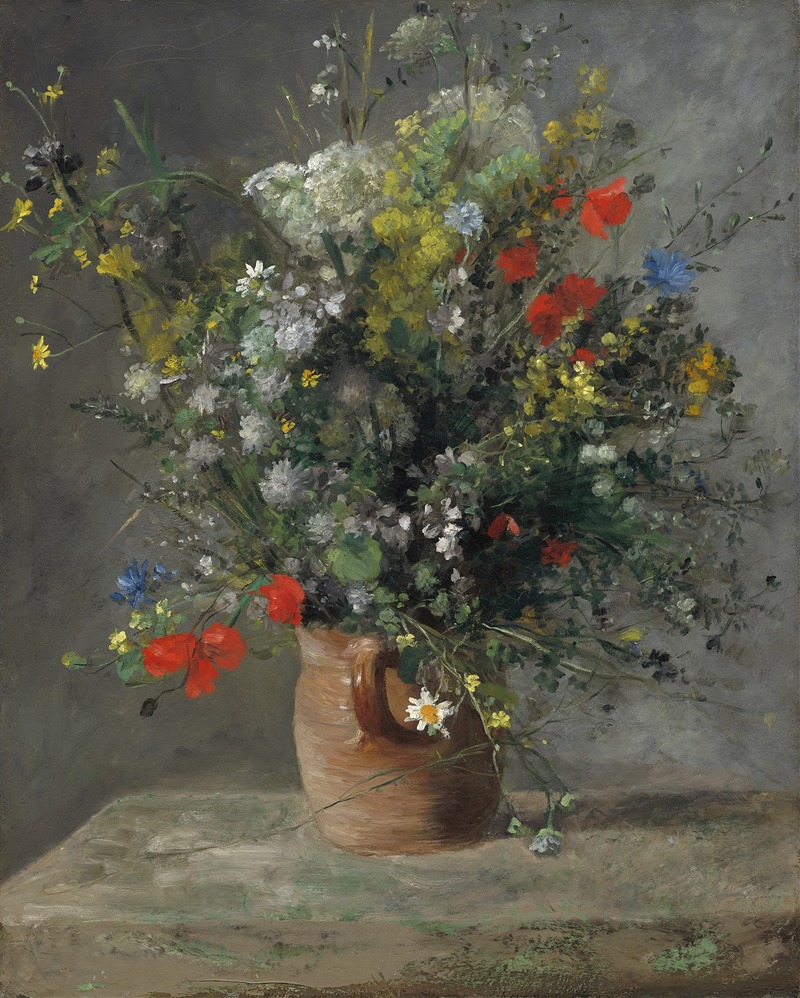
Flowers in a Vase
A hand-painted replica of Pierre-Auguste Renoir’s masterpiece Flowers in a Vase, meticulously crafted by professional artists to capture the true essence of the original. Each piece is created with museum-quality canvas and rare mineral pigments, carefully painted by experienced artists with delicate brushstrokes and rich, layered colors to perfectly recreate the texture of the original artwork. Unlike machine-printed reproductions, this hand-painted version brings the painting to life, infused with the artist’s emotions and skill in every stroke. Whether for personal collection or home decoration, it instantly elevates the artistic atmosphere of any space.
Pierre-Auguste Renoir, a prominent French artist and a leading figure in the development of the Impressionist style, is renowned for his vibrant light and saturated color, often focusing on people in intimate and candid compositions. Among his extensive oeuvre, Renoir also created a number of still life paintings, including "Flowers in a Vase." This painting exemplifies his ability to capture the delicate beauty and transient nature of flowers, a subject that has intrigued artists for centuries.
"Flowers in a Vase" is a testament to Renoir's skill in rendering texture and light. The painting typically features a bouquet of flowers arranged in a vase, showcasing a variety of blooms that might include roses, daisies, and other garden flowers. Renoir's brushwork in these still lifes is often loose and fluid, a hallmark of the Impressionist movement, which sought to capture the impression of a moment rather than the detailed realism that characterized earlier artistic styles.
The composition of "Flowers in a Vase" is usually simple yet elegant, focusing on the interplay of colors and the way light interacts with the petals and leaves. Renoir's use of color is particularly noteworthy; he often employed a vibrant palette that brought out the richness of the flowers' hues, creating a sense of warmth and vitality. The background in these works is typically understated, allowing the flowers to take center stage and emphasizing their natural beauty.
Renoir's still lifes, including "Flowers in a Vase," were not just exercises in technique but also explorations of the beauty found in everyday objects. During the late 19th century, when Renoir was active, the Impressionists were breaking away from the traditional subjects and techniques of academic painting. By choosing to paint flowers, Renoir aligned himself with a long tradition of still life painting while also embracing the Impressionist ethos of capturing fleeting moments and the effects of light.
The exact date of creation for "Flowers in a Vase" can vary, as Renoir painted multiple works with similar themes throughout his career. These paintings are often undated, making it challenging to pinpoint their exact place within his artistic timeline. However, they are generally believed to have been created during the height of the Impressionist movement, in the late 19th century.
Renoir's "Flowers in a Vase" paintings are held in various collections around the world, both in private hands and public institutions. They continue to be celebrated for their beauty and the way they encapsulate the Impressionist fascination with light, color, and the ephemeral nature of life. These works offer viewers a glimpse into Renoir's artistic process and his ability to find beauty in the simple, everyday subject of flowers.
In summary, "Flowers in a Vase" by Pierre-Auguste Renoir is a fine example of Impressionist still life painting. It highlights Renoir's mastery of color and light, as well as his ability to capture the delicate beauty of flowers. Through these works, Renoir invites viewers to appreciate the transient beauty of nature, rendered with the vibrant energy that characterizes his broader body of work.





